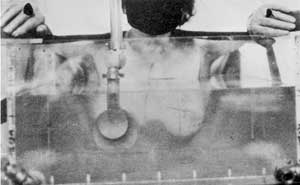1990s
As in past years, in the 1990s the AIUM continued to establish its presence in the ultrasound community, producing official statements on key ultrasound issues and publishing clinical scanning guidelines. In addition, the AIUM produced numerous videos and publications for ultrasound professionals.
During William O'Brien, Jr., PhD's presidency, the new voluntary standard for diagnostic ultrasound equipment intended for human use was initiated, resulting in the publication of the "Standard for Real-time Display of Thermal and Mechanical Acoustic Output Indices on Diagnostic Ultrasound Equipment."
In response to membership requests, the AIUM established a committee to develop voluntary guidelines for accreditation for ultrasound practices in obstetric and gynecologic facilities.
The accomplishments of the American Institute of Ultrasound in Medicine are wholly dependent upon the success of its committees.
In October 1993, the AIUM opened its doors in Laurel, Maryland, which remains the site of the AIUM executive office today. The AIUM's 19th president, Michael Tenner, MD, was instrumental in the acquisition of the AIUM headquarters building.
In September 1995, the AIUM debuted a website containing information about the AIUM's activities.
In October 1995, the AIUM's Ultrasound Practice Accreditation Commission was developed. The commission's goals were to meet the needs for assurance of proper training, proper experience, and proper understanding of the technology among users of diagnostic ultrasound. By February 1996, the AIUM was well on its way to accomplishing this goal as more than 900 ultrasound practices requested the introductory brochure on obstetric and gynecologic ultrasound practice accreditation.
 In September 1996, the AIUM announced 30 practices had been accredited. The Ultrasound Practice Accreditation Commission would later evolve into the Ultrasound Practice Accreditation Council.
In September 1996, the AIUM announced 30 practices had been accredited. The Ultrasound Practice Accreditation Commission would later evolve into the Ultrasound Practice Accreditation Council.
In addition to its interest in ultrasound practice accreditation, the AIUM established an Education and Research Fund for the purpose of advancing education and establishing research opportunities in ultrasound.
In 1997, the AIUM's Distinguished Sonographer Award was established.
In 1999, the AIUM Ultrasound Practice Accreditation Commission added an accreditation option for practices performing breast ultrasound examinations. On July 15, 1999, the AIUM accredited its first practices performing breast sonography.
During Frederick Kremkau, PhD's presidency in the late 1990s, the AIUM began offering AMA PRA category 1 CME credit tests in the Journal of Ultrasound in Medicine. Now, both physicians and sonographers had the opportunity to earn the credits they needed for accreditation, to meet state licensing requirements, or to be recertified.
The primary goal in accrediting ultrasound practices is to ensure that all practitioners meet, at the very least, a basic level of competence in performing and diagnosing ultrasound examinations.


Comparison of old bistable image with new 3D gray scale image of triplets.


Top image shows an early A-mode image of a renal cyst aspiration performed by Barry B. Goldberg, MD, who pioneered this application in the United States. Bottom image shows a recent gray scale ultrasound-guided needle biopsy of a thyroid nodule.

AIUM Headquarters

Peter H. Arger, MD (right), the AIUM's 20th president from 1995 to 1997, presents the 1998 Distinguished Sonographer Award to John Forsythe, RDMS, RDCS, RVT.

A patient in Dr Gilbert Baum's early breast scanner undergoing ultrasound mammography.
